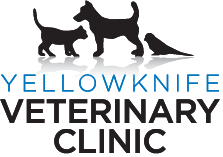Library
-
Collie Eye Anomaly (CEA) is a genetic mutation affecting many breeds that causes developmental defects in the eye that can lead to vision deficits or blindness. This defect can be diagnosed by a veterinary ophthalmologist between 6 and 8 weeks of age by visualizing spots of choroidal hypoplasia or a colobomas . It can be associated with microphthalmia or enophthalmia. It can lead to retinal detachment and blindness. Although laser repair of partial retinal detachments can be attempted if detected in early stages, there is generally no treatment for CEA. Vision varies depending on the extent of the lesions and some dogs will become blind. Prevention requires not breeding animals that carry the mutation and this can be achieved through genetic testing of breeding dogs.
-
Colloidal oatmeal topical (brand name DermAllay®, Epi-Soothe, others) is an anti-inflammatory, antipruritic (anti-itching), and emollient (softening, soothing) agent used in the treatment of surface skin disorders and skin reactions in cats and dogs. It is made from oat grains (Avena sativa). Colloidal oatmeal topical comes in spray, cream rinse, and shampoo forms.
-
Color dilution alopecia is an autosomal recessive genetic disorder that affects dogs with dilute-colored coats causing hair loss. Some dogs will also be affected by secondary bacterial infections so topical management and pruritus treatments may be needed to improve the dog's comfort. Affected dogs and their relatives should not be bred.
-
Colostrum is given by mouth and is used over the counter to treat various immune-mediated and inflammatory conditions. Give as directed by your veterinarian. Side effects are uncommon and may include gastrointestinal upset in pets with a dairy allergy. There are no known contraindications. If a negative reaction occurs, please call your veterinary office.
-
Pet birds often become ill when they are not cared for or fed appropriately. Birds can develop infections with bacteria (e.g., Chlamydia psittaci) and parasites (e.g., Giardia). They also commonly suffer from reproductive problems (e.g., egg binding and tumors) and feather-picking. Birds on all-seed, high-fat diets may become obese and develop fatty liver syndrome. Older birds may develop cloacal papillomas or cancer. Your veterinarian familiar with birds will formulate an appropriate diagnostic and treatment plan if your pet bird becomes ill.
-
Like other pets and people, mini-pigs can suffer from numerous health problems including inner/middle ear infections, foot abnormalities, atrophic rhinitis, pneumonia, intestinal parasites and obesity. Obesity can lead to joint injury and arthritis. Mini-pigs may ingest inappropriate items leading to gastrointestinal tract blockages. If blockages are not dealt with quickly intestinal rupture and death may occur.
-
Like other pets and people, mini-pigs may suffer from numerous health problems, including those associated with the urinary and reproductive tracts, eye health, melanoma, accidental poisoning, a bacterial disease called erysipelas, and an unusual disease called Dipity Pig.
-
There a several viral diseases that affect pet and backyard chickens. Knowing the symptoms, treatment options, and methods of prevention is beneficial to anyone who owns chickens. The five most common viral diseases are: Marek's disease virus, lymphoid leukosis virus, avian influenza, infectious bronchitis and Newcastle disease virus.
-
The complete blood count (CBC) assesses different parameters of the cells in the blood including total number, appearance, size, and shape. Red blood cells, white blood cells, and platelets comprise the cellular component of the blood.
-
Compulsive disorders are repetitive behaviors done so frequently that they interfere with a dog's daily life. Some behaviors performed compulsively can cause physical injury. Compulsive disorders may reflect underlying behavioral illness, medical illness, or a combination. Treatment programs should address the behavioral and medical causes. Some aspects of behavioral treatment may need to be continued for the life of the dog.

